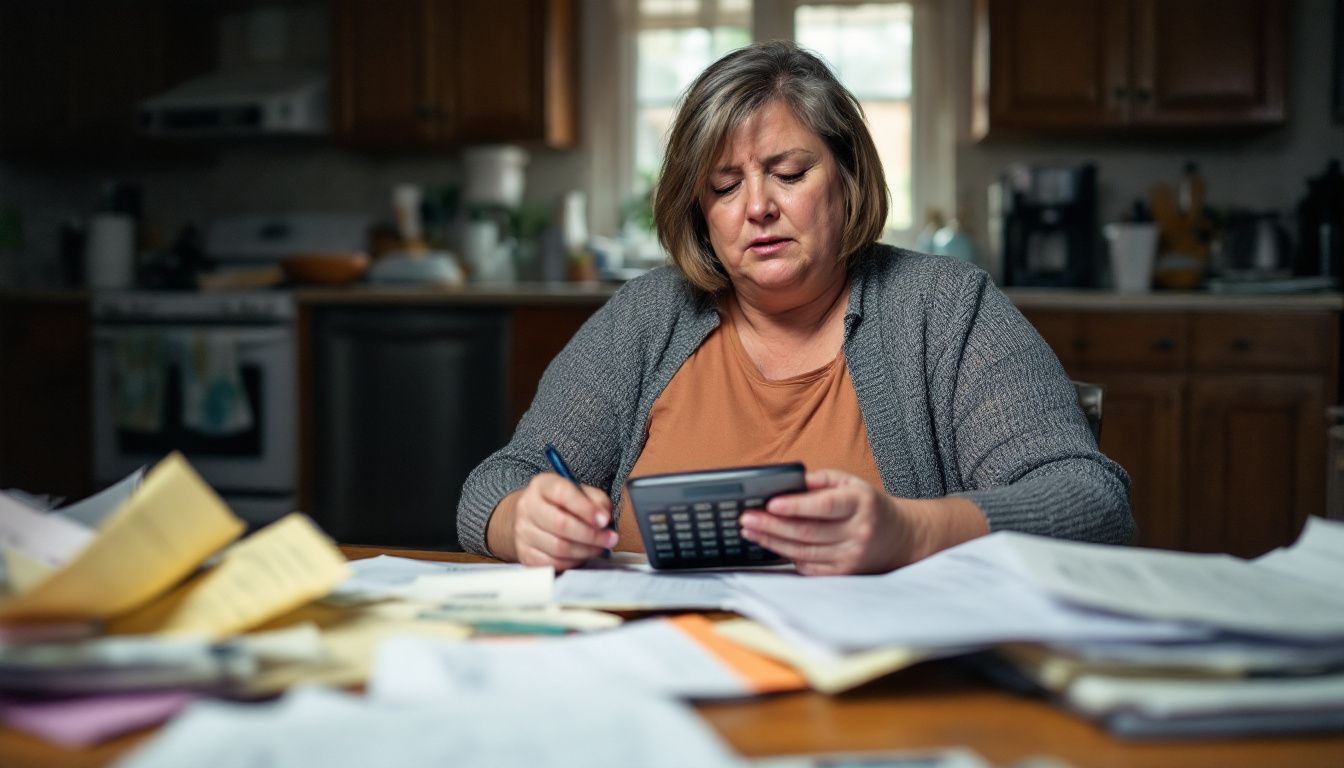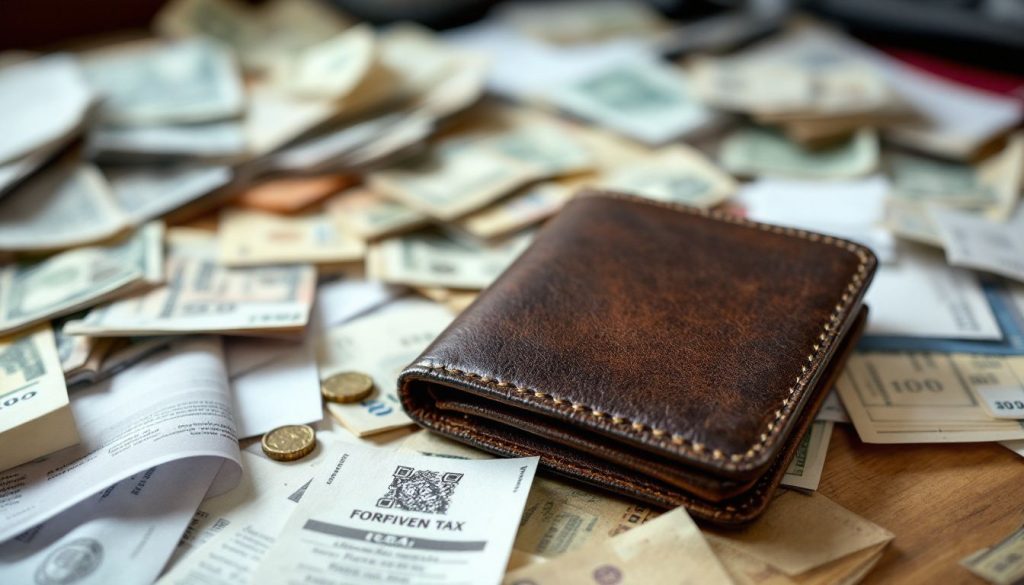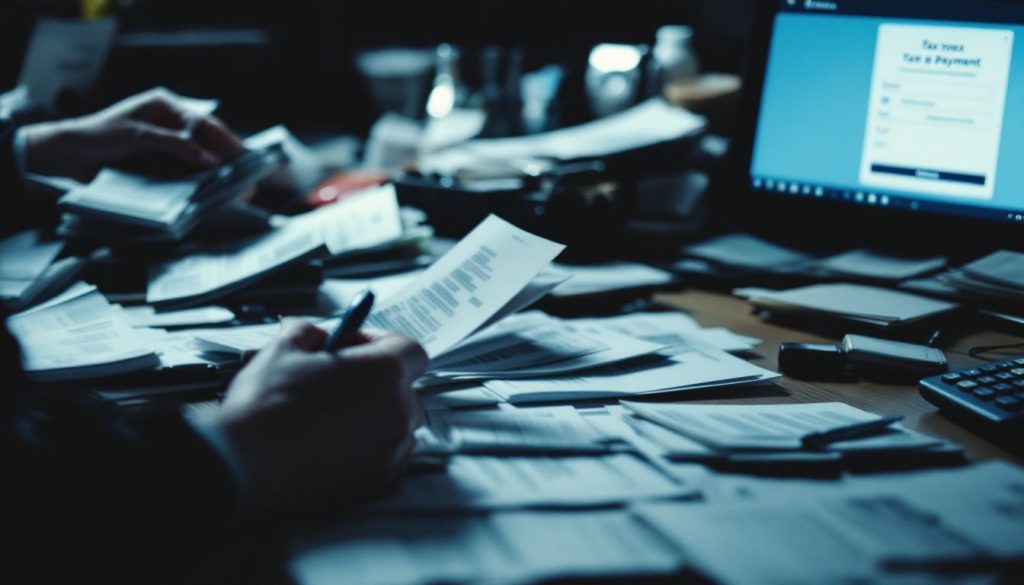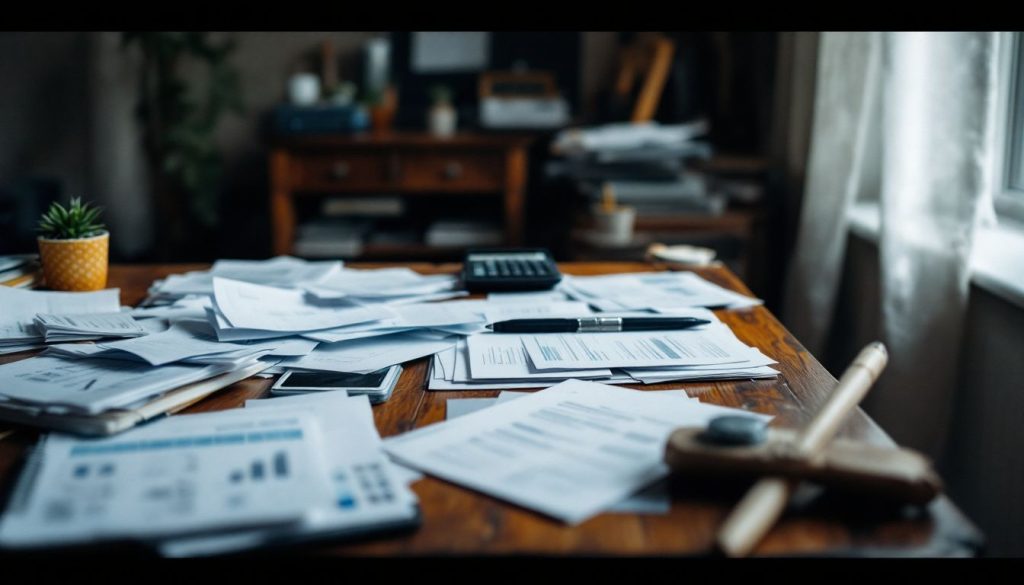Paying back taxes can be hard. A fact is, options exist for managing debt with the CRA. This blog will show you ways to handle cra paying back taxes. Keep reading to learn more!
Key Takeaways
- You can pay CRA taxes online, do partial payments, or set a payment plan. If you can’t pay all at once, contact CRA for help.
- Pre-authorized debit lets you make automatic tax payments from your bank. Change the amount and timing if needed.
- Missed tax payments cause extra fees. April 30 is the deadline to avoid penalties. If you’re late, reach out to CRA right away.
- The CRA can take money directly from your wages (garnishment) if you don’t address tax debts.
- Scams try to trick people about CRA debts. Always check with CRA directly if unsure about calls or emails asking for money or info.
Payment Options for CRA Paying Back Taxes
Payment options for paying back taxes to the CRA can help you manage your debt better. You have choices like online payments, partial payments, and payment arrangements to find what works best for you.
Online Payment through Bank or Credit Union
You can make online payments to the CRA through your bank or credit union. This option allows you to pay personal income taxes or business taxes directly from your account. Payments are easy and quick when using online banking services.
The CRA also provides ways to delay a payment if needed. You can set up payment arrangements based on what you can afford. If you’re unsure about how to start, contact the CRA for help with tax debt assistance.
Payment options include personal income tax, business taxes, and other government programs.
Partial Payment
Partial payment is an option for paying back taxes. This means you can pay a part of your debt now and pay the rest later. The CRA allows this to help people manage their income tax debts.
A payment arrangement is needed to set this up with the CRA. You will need to show what you can afford each month.
This option may apply to personal income taxes, business taxes, or other government programs where you owe money. It’s smart to contact the CRA if you cannot pay in full or on time.
They offer help with payment plans for tax debt and ways to reduce interest and penalties on late payments.
Payment Arrangement
A payment arrangement helps you pay off your tax debt over time. This plan is based on how much you can afford to pay.
- A payment arrangement is an agreement with the CRA. It allows you to spread out payments based on your income and expenses.
- You can set up this arrangement for various debts, including personal income taxes and COVID-19 benefits.
- The CRA will consider your financial situation when deciding on the amount and terms of the arrangement.
- Payments can be made directly from your bank account if your bank or credit union supports this option.
- Making a payment in full might not be possible for everyone. In such cases, contact the CRA as soon as possible to discuss alternative options.
- You may need to provide information about your income and expenses during the application process.
- Adjustments can be made if your financial situation changes later on, so always stay in touch with the CRA.
- Failure to keep up with agreed payments could lead to penalties or further collection actions by the CRA.
- Interest rates may also apply to any balance remaining after setting up a payment arrangement.
- For assistance, you can call the CRA collections phone number or check their website for more resources related to tax debt relief options.
These points show how a payment arrangement works for managing your debt with the CRA effectively.
Pay by Pre-Authorized Debit
Paying your taxes by pre-authorized debit is a simple option. This method allows money to be taken directly from your bank account.
- Choose the pre-authorized debit service through the CRA website or contact them. This will allow you to set up automatic payments.
- Set the amount you wish to pay every time. You can choose to pay a fixed amount, making it easy to budget.
- Select how often payments will be made. Options include weekly, bi-weekly, or monthly payments based on what works best for you.
- Confirm that your bank details are correct before finalizing the setup. Errors can delay or disrupt your payment schedule.
- You can pause or change your payment plan if needed. If circumstances change, reach out to the CRA to make adjustments without penalties.
- Payments reduce interest and penalties over time, helping with tax debt management. Making regular payments keeps you on track with due dates.
- Avoid late fees by ensuring funds are available in your account on payment days. The CRA charges interest and penalties for missed payments.
- Keep records of all transactions for your personal accounting purposes and future reference regarding tax arrears repayment.
- Contact the CRA if you encounter problems with pre-authorized debit or need assistance with tax debt repayment options.
- Using this method helps manage tax liabilities effectively while reducing stress over unpaid taxes to the CRA.
Contacting the CRA for Assistance
Contact the CRA for help if you cannot pay your tax debt in full or on time. They offer various options to assist Canadians facing financial issues. A payment arrangement lets you spread out payments based on what you can afford.
The CRA also helps with income taxes, COVID-19 benefits, and other overpayments.
Reach out to the CRA as soon as possible. This will allow you to explore potential solutions and avoid penalties or extra interest. You can find contact information for tax debt assistance on their website.
Acting quickly may give you better options for managing your debt repayment plans.
Due Dates and Penalties for Tax Debts
Tax debts have specific due dates. Late payments can lead to extra fees and interest charges.
April 30th Tax Filing and Payment Deadline
April 30th is the deadline for filing and paying personal income taxes in Canada. You must pay your debts to the CRA by this date to avoid penalties. Late payments can lead to interest charges, making it harder to manage your debt.
If you received COVID-19 benefits, those repayments are also due by April 30th.
It is important to stay on top of these dates. Missing them may cause more financial stress. The CRA provides payment options for tax debts and can help if you cannot pay in full or on time.
Contact the CRA for assistance and explore tax payment options available to you.
Interest and Penalties for Late Payment
Interest and penalties apply if you do not pay your taxes on time. The CRA charges interest on unpaid tax debts starting from May 1st each year. If you miss the payment deadline of April 30th, expect higher costs over time.
Late payments can lead to serious consequences. You might face extra fees that add to what you owe. It is crucial to pay your debt to avoid these issues. Seeking tax payment assistance early can help manage your debt effectively with options like a payment arrangement or online banking payments through your bank or credit union.
Repaying COVID-19 Benefits
You must repay COVID-19 benefits if you received them. These payments were made to help during tough times. If you can’t pay back everything at once, the CRA offers options for payment arrangements.
This means you can spread out your payments over time based on what you can afford.
Failing to repay these benefits can lead to penalties and interest charges. It’s important to contact the CRA if you’re facing issues with repayment. The CRA has programs in place that could help reduce penalties or change your payment schedule, making it easier for Canadians to manage tax liabilities related to this debt.
Debt Collection at the CRA
The CRA collects different types of debts. They may take money directly from your wages if you owe taxes.
Types of Debts Collected
The CRA collects different types of debts. These include personal income taxes, business taxes, and overpayments from government programs. Many Canadians may owe money for COVID-19 benefits or subsidies as well.
A payment arrangement can help you pay back these debts over time based on what you can afford.
Garnishment is one way the CRA collects debts. This means they can take money directly from your wages or bank account without asking first. It’s important to address tax debts quickly to avoid serious consequences like penalties and extra interest fees.
Process for Garnishment
Garnishment occurs when the CRA collects owed tax from your paycheck or bank account. This process helps manage tax debt effectively.
- Notification: The CRA sends a notice before garnishing funds. You will get a warning that they intend to take money for unpaid taxes.
- Employer Involvement: If wages are garnished, your employer must withhold a part of your paycheck. They will send this amount directly to the CRA to cover your tax debt.
- Bank Account Garnishment: Money can also be taken from your bank account. The CRA will give your bank instructions to transfer funds if you owe taxes.
- Amount Taken: A specific percentage of your income can be garnished each pay period. This is usually based on federal guidelines and takes into account how much you make.
- Rights and Options: You have rights during this process. You may contact the CRA to discuss payment options, like a payment arrangement if you cannot pay in full.
- Impact on Future Payments: Garnishment continues until the debt is fully paid off or until you make a new payment arrangement with the CRA.
- Tax Debt Assistance Options: It’s vital to seek help before garnishment starts. Contacting the CRA early can lead to better outcomes in managing your tax liabilities effectively.
- Consequences of Ignoring Notices: Ignoring notifications can lead to more severe actions, such as legal collections or further penalties on your tax debt.
- Staying Updated: Always keep records of payments made toward your debt. Monitoring payments helps ensure that everything is accurate and up-to-date with the CRA.
- Avoiding Scams: Be cautious of calls or emails claiming they are from the CRA about debts owed without verification, as scams related to tax debts exist widely across Canada.
Collections Policies
The CRA collects different types of debts. These include personal income taxes, business taxes, and some government benefits like COVID-19 subsidies. If a debt remains unpaid, the CRA may take action to recover it.
This can involve garnishing wages or taking money from bank accounts.
Policies for collections are clear and strict. The CRA will charge interest and penalties if payments are late. Contacting the CRA is crucial if you cannot pay your tax debts on time or in full.
They offer payment arrangement options that allow you to repay your debt over time based on what you can manage financially.
Additional Resources and Assistance
5. Additional Resources and Assistance: You can find help if you are contacted by the CRA about your debt. There are many options for support available to guide you through this process.
Stay informed to better manage your tax situation. Read on for more details!
What to Expect if Contacted by the CRA
The CRA may contact you about your tax debt. They will inform you of what you owe and any interest or penalties. This includes debts from income tax, COVID-19 benefits, or other overpayments.
If you cannot pay in full, discuss your options with them. A payment arrangement can help spread out payments based on what you can afford.
If contacted by the CRA, keep records of all communication. They might offer ways to delay a payment or change an existing arrangement. It’s crucial to respond quickly to avoid further problems.
Debt recovery efforts could continue into 2024, so it is wise to address your situation as soon as possible for assistance with managing your tax liabilities.
How Long a Debt Can Be Collected
Debts to the CRA can be collected for several years. Generally, the CRA has up to six years from the date of a tax return to collect unpaid taxes. This means that if you do not pay your debt, collection efforts may continue into 2024 and beyond.
Tax debts include personal income taxes, business taxes, and some government program overpayments like COVID-19 benefits. It is crucial for Canadians to stay informed about their obligations.
Contacting the CRA early is wise if you face challenges in paying back taxes or need assistance with payment arrangements.
Recognizing and Avoiding CRA Scams
Scams related to the CRA can trick many Canadians. These scams often ask for personal information or money. The CRA will never ask for your tax information through email or text messages.
Always verify any request by contacting them directly.
If you get a call about unpaid taxes, stay calm. Hang up and call the official CRA number to check if it is true. Be cautious of anyone asking for payment in unusual ways, like prepaid cards or wire transfers.
Protect yourself from these scams by staying informed and aware of what signs to look for.
Contact Information for Tax Debt Assistance
After spotting potential CRA scams, know where to seek help. Canadians with tax debts can contact the CRA for assistance. They offer guidance on payment options for income taxes and COVID-19 benefits.
You can call the CRA at 1-800-959-8281 for personal income tax questions. For business taxes or other issues, dial 1-800-959-5525. These numbers connect you to experts who can discuss your debt collection process and payment arrangements.
Keep in mind that payments may be set up based on your ability to pay. Make sure to reach out if you’re unable to pay in full or on time for support with your tax liabilities.
FAQs
1. What are the payment options for CRA paying back taxes?
The Canada Revenue Agency (CRA) offers various income tax payment options to help you manage your debt. These include setting up a payment arrangement for tax debt and other debt repayment strategies.
2. How can I manage my tax liabilities with the CRA?
By using the CRA’s offered payment arrangements and understanding their due dates, you can effectively manage your tax liabilities and pay back any owed taxes in a manageable way.
3. Where can I find assistance if I’m struggling with my tax debts?
There are several services that offer debt collection assistance, including guidance on managing your payments to the CRA and exploring different strategies for paying back taxes.
4. How do I set up a payment plan for my taxes with the CRA?
You can contact the CRA directly using their provided contact information to discuss setting up a payment arrangement for your outstanding tax debts.









